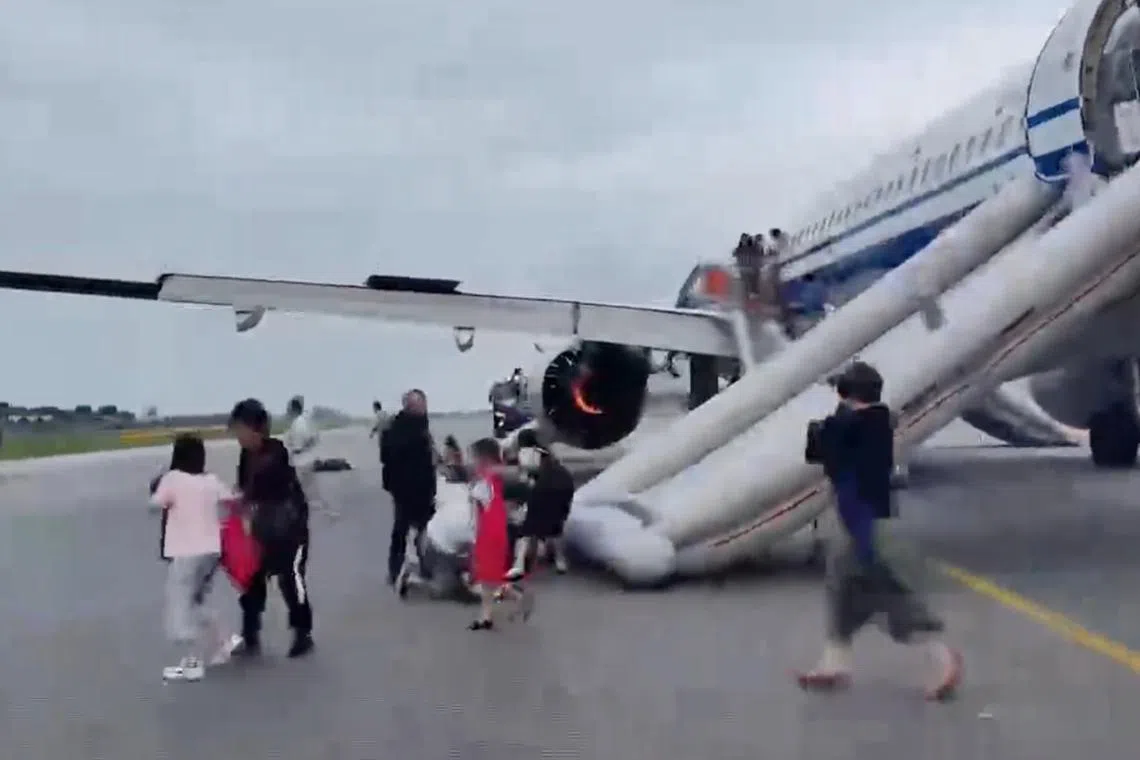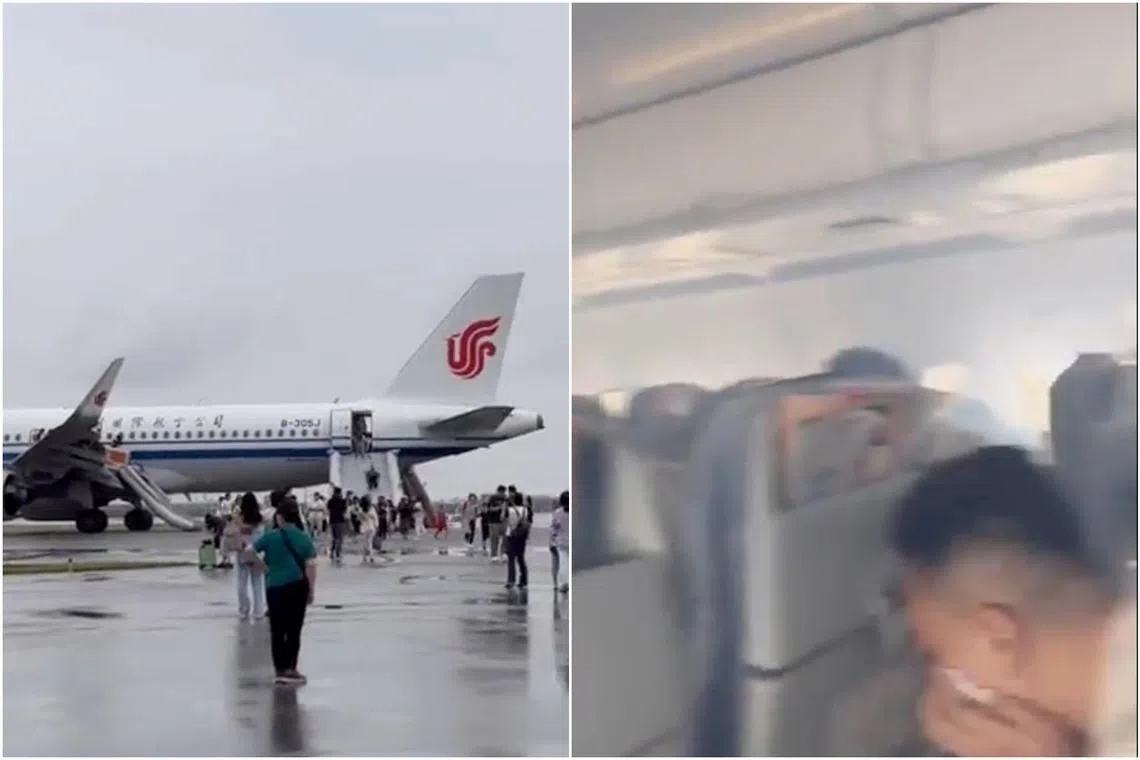Engine mechanical failure may have caused Air China plane’s emergency landing: Airline
Sign up now: Get ST's newsletters delivered to your inbox

The emergency landing led to one of the runways at Changi Airport being closed for almost three hours.
PHOTO: CHINAAVIATIONREVIEW/X
Follow topic:
SINGAPORE - An engine mechanical failure may have been behind the fire that forced an Air China flight from Chengdu,
This is according to the airline’s initial assessment of the incident, China’s flag carrier said in a post on Chinese social media platform Weibo early on Monday.
Further investigations are under way.
Air China said the nine crew members on board Flight CA403 handled the incident properly and according to procedure.
The pilots of the flight, which left Chengdu’s Tianfu International Airport at 11.05am on Sunday, declared an emergency and requested priority landing at Changi Airport at around 3.59pm after reporting smoke in the plane’s forward cargo hold and lavatory.

The pilots of the flight declared an emergency and requested priority landing at Changi Airport after reporting smoke in its forward cargo hold and lavatory.
PHOTOS: CHINAAVIATIONREVIEW/X
After the plane landed on Changi Airport’s Runway 3 at around 4.15pm, the aircraft’s emergency slides were deployed for passengers to evacuate.
Air China said the 146 passengers on board were cooperative, which allowed for a successful evacuation.
The Airport Emergency Service responded immediately to the incident and put out a fire in the left engine at about 4.25pm.
Air China said in its Weibo post: “With the assistance of Changi Airport, work to re-accommodate the passengers has been completed. We sincerely apologise to the affected passengers.”
The emergency landing led to one of the runways at Changi Airport being closed for almost three hours. This delayed flights leaving and arriving at the airport.
One aircraft was diverted to Batam, Indonesia, during the runway’s closure, but the Civil Aviation Authority of Singapore (CAAS) and Changi Airport Group did not say how many other flights were affected by the incident.
Nine passengers on the Air China flight sustained minor injuries related to smoke inhalation and abrasions during evacuation.
Singapore’s Transport Safety Investigation Bureau is investigating the incident and has contacted its Chinese counterpart, which will help with the probe, CAAS added.
The Air China flight was operated with an Airbus A320neo aircraft that is more than four years old and registered as B-305J.
The plane was powered by Pratt & Whitney PW1100G engines, which have been plagued by reliability problems that have forced airlines to ground aircraft in the past.


